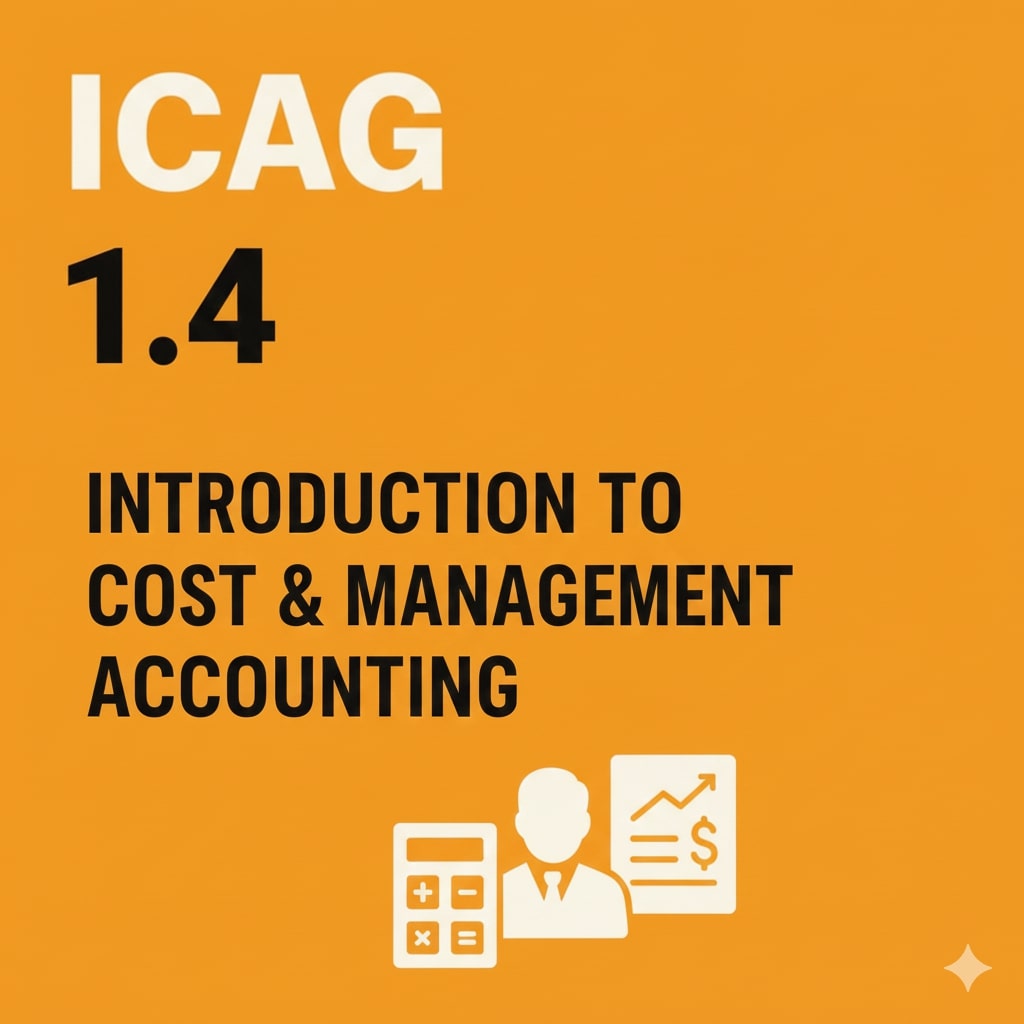The Introduction to Cost & Management Accounting module (Paper 1.4) is part of the Knowledge Level (Level 1) in the ICAG professional qualification syllabus. It introduces foundational concepts in cost and management accounting, including the scope, accounting for costs, costing techniques, forecasting, budgeting, and standard costing to support planning, control, and decision-making in organizations. Below is the syllabus coverage in tabular form, including main topics and their approximate weightings (guiding study time and exam mark allocations).
| Syllabus Topic | Description | Weighting (%) |
|---|---|---|
| A. Scope of Management Accounting | Explains the nature and purpose of management accounting, including its objectives, relationship with financial accounting, and reasons for measuring costs for planning, control, and decision-making. Covers the differences between the role of management accountants in private and public sectors, the need for integrity and ethical behavior in preparing management information, and the role of management accounting in commercial and public sector organizations. Includes cost models, cost behavior, responsibility accounting, and relevant vs. non-relevant costs, including opportunity cost. | 10 |
| B. Accounting for Cost Elements | Involves identifying, explaining, and accounting for materials (order, purchase, receipt, storage, stock levels, Economic Order Quantity, issue using FIFO, LIFO, Weighted Average, Simple Average), labour (direct and indirect, remuneration, incentive schemes, payroll computations), and overheads (classification, analysis, allocation, apportionment, absorption). | 20 |
| C. Costing Techniques, Methods, and Pricing | Covers calculating unit costs using direct costing and absorption costing, reconciling differences, and selecting appropriate costing methods (job costing, service costing, specific order costing, process costing) to determine sales prices. Includes Cost-Volume-Profit (CVP) analysis implications for decision-making. | 20 |
| D. Forecasting Techniques | Involves selecting and applying forecasting techniques to assist in budget preparation, including time series, trend, seasonal variations, cyclical variations, random variations, moving average trends, high-low method, and simple regression analysis. Highlights the relevance and use of technology and software in forecasting. | 15 |
| E. Budgeting | Explains the purpose of budgets and budgetary control, including definitions, importance for organizational performance, role as authorization to spend, and different budgeting models (incremental, zero-based, priority-based, planned programme, performance-based, participatory, resource-restricted). Covers budgetary control systems, feedback/feed-forward control, objectives, budget-building processes (top-down vs. bottom-up), role of standards, and preparation of functional, cash, income statement, and financial position budgets. Includes the cash cycle and the importance of ethics and professional scepticism in budget preparation. | 15 |
| F. Budgeting Process in the Public Sector | Outlines the key characteristics of budgeting in the public sector, including the role and responsibilities of key officers (Minister for Finance, Controller and Accountant General, principal spending officers, principal accounts holders), the relationship between planning and budgeting, objectives, challenges, and limitations. Covers types of budgets, approaches, budget cycle (formulation, authorization, approval, execution, reporting, monitoring, evaluation), format and contents of public sector budgets, public sector programmes, programme sustainability, legislative requirements, and the role of the Ghana Integrated Financial Management Information Systems (GIFMIS). | 10 |
| G. Standard Costing and Basic Variances | Involves explaining standard costing, types of standards, process of setting standards, and importance. Includes calculating and explaining variances between actual performance and standards or budgets for materials, labour, and variable overheads, and identifying possible reasons for differences. | 10 |



